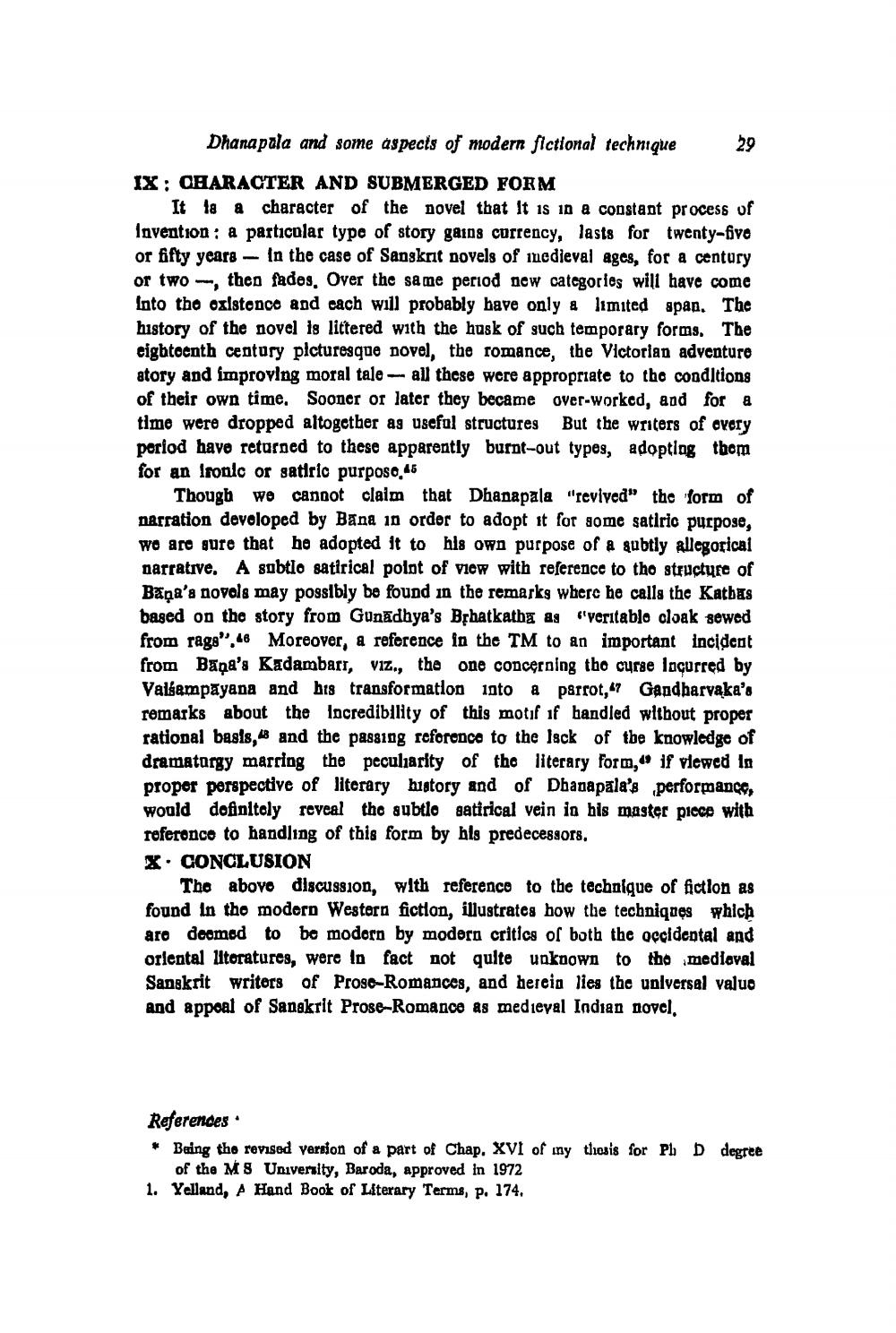________________
Dhana pala and some aspects of modern fictional technique
IX : CHARACTER AND SUBMERGED FORM
Itta a character of the novel that It is in a constant process of Invention: a particular type of story gains currency, lasts for twenty-five or fifty years - In the case of Sangkrit novels of medieval ages, for a century or two -, then fados. Over the same period new categories will have come Into the oxistence and cach will probably have only a limited apan. The history of the novel is littered with the husk of such temporary forms. The eigbtoenth century picturesque novel, the romance, the Victorian adventure atory and improving moral tale all these were appropriate to the conditions of their own time. Sooner or later they became over-worked, and for a time were dropped altogether ag useful structures But the writers of overy poriod have returned to these apparently burnt-out types, adopting thom for an Ironic or satiric purposo.45
Though we cannot claim that Dhanapala "revived" the form of narration developed by Bana in order to adopt it for some satiric purpose, wo are gure that he adopted it to his own purpose of a gubtly allegorical narrative. A sobtlo satirical polot of view with reference to tho structure of Bana'a novela may possibly be found in the remarks where he calls the Katbus based on the story from Gunadhya's BỊhatkatby ag "veritablo cloak gewed from rags”.46 Moreover, a reference in the TM to an important incident from Bana's Kadambari, viz., the one conceroing tho curse locurred by Valsampayana and his transformation into a parrot, Gandharvaka's remarks about the lacredibility of this motif if handled without proper rational basis, and the passing reforence to the lack of the knowledge of dramaturgy marring the peculiarity of the literary form, if viewed In propor perspective of literary history and of Dhanapala's performance, would definitoly reveal the subtlo satirical vein in his master piece with referonce to handling of this form by his predecessors. X. CONCLUSION
The above discussion, with reference to the technique of fiction as found in tho modern Western fiction, illustrates how the techniques which are deemed to be modern by modern critics of both the occidental and oriental literatures, were in fact not quite unknown to the mediaval Sanskrit writers of Proso-Romances, and herein lies the universal value and appoal of Sanakrit Prose-Romance as medieval Indian novel.
References * Baing the revised version of a part of Chap. XVI of my thesis for PhD
of the MS University, Baroda, approved in 1972 1. Yelland, Hand Book of Literary Terms, p. 174.
degree




